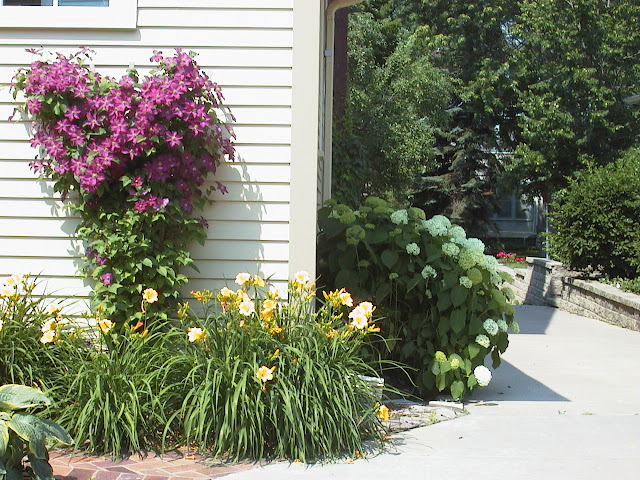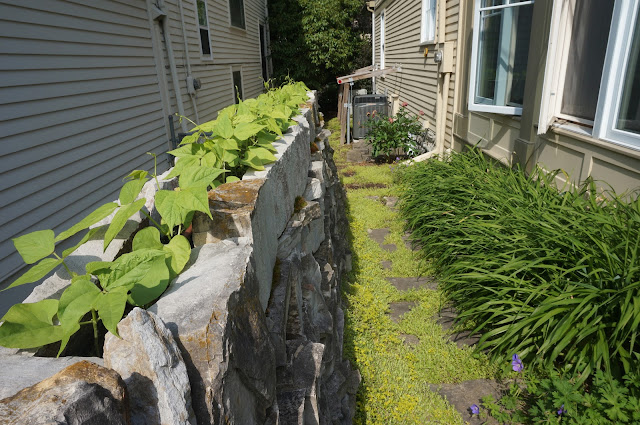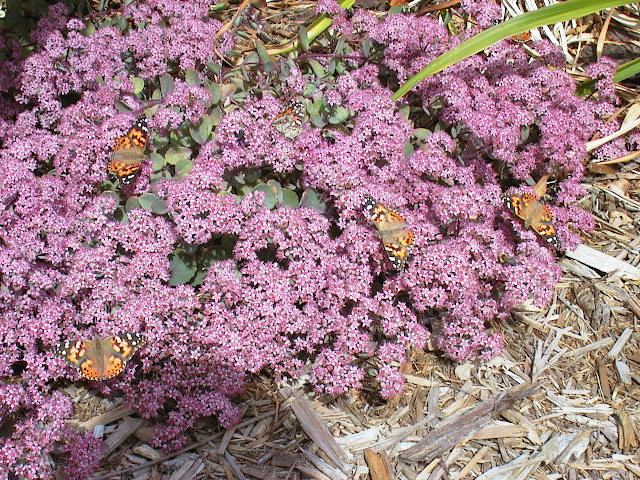This post is more of a journal entry than a public blog post. It is interesting to me, but won't be too interesting to almost any other reader - except perhaps my partner who was there as a co-conspirator. I want to document my thoughts about the past, my backyard garden, and what we put in it.
The size of our city lot was not large. At 100 x 50 ft, there was just enough room for the house, a small garage, and back yard. The driveway was shared with our neighbor. The style of the house was standard American Foursquare, built in 1903. We bought the place in the early 1990's and slowly, over the next 25 years, renovated almost every inch the house and garden.
 |
| A dry stone wall was built, with terrace bed to break up the height of the wall |
 |
| Caladiums and dragon-wing begonias line the steps of the front porch |
.JPG) |
| Well-earned sit-down on the front porch after a busy day |
 |
| Front wall terrace with blue phlox, hostas, astilbe, snap dragons, and coral bells. |
 |
| Front wall terrace, brunnera "Jack Frost," phlox, and snap dragons |
In the 1990s, a sunroom and mudroom were added to the back of the house. At the same time, we hired a newly trained landscape designer to design our garden. We were her first client and were delighted with her design. A highlight of the plan was the construction of a dry stone wall on two sides of the back garden, a design similar to those common in Ireland.
 |
| Back of the house, with sun and mud rooms added |
 |
| Wide angle view of the back yard and stone walls |
 |
| Struggling ageratum, phlox, astilbe, and perennial begonias. |
 |
| Good old day lillies (stella d'oro) softens the stone wall |
 |
| Clematis and day lillies, with mop hydrangeas along the shared driveway |
 |
| Trellises with clematis and rose mix |
 |
| Three wroght iron obelisks held cylindrical flower baskets |
 |
| Annual assembly of the flower baskets |
 |
| Flower baskets with dragon wing begonias and petunias |
 |
| One year, the baskets contained mostly petunias and vines |
 |
| Another year, we used a lot of dark red coleus and bright green vines |
 |
| Our final year at the house, a mix of plants that had thrived in the past |
 |
| A planter box, built of stones sits on top or the dry stone wall |
 |
| A nephew helped with the mowing |
 |
| Not to be out done, another nephew helped mow the front yard |
 |
| Holiday lights on the flower towers |
 |
| Beautiful astilbes, even in winter |
 |
| Cymbidium orchids in the sunroom, having survived all summer on the patio |


.JPG)
























Comments
Post a Comment